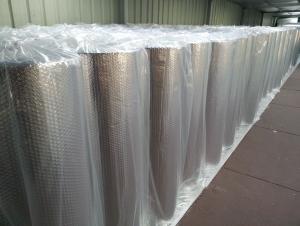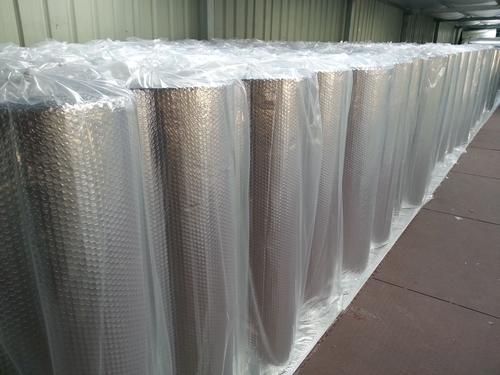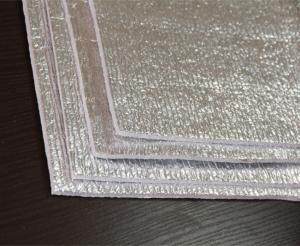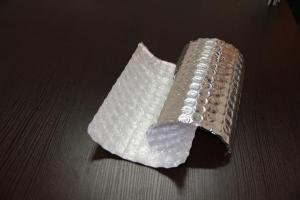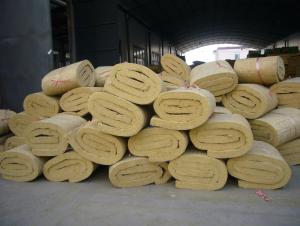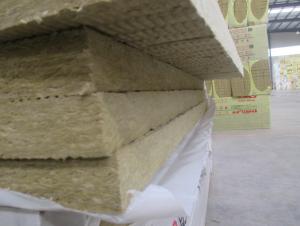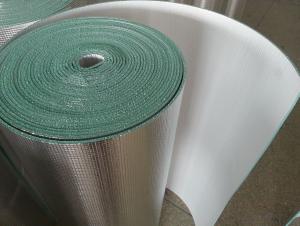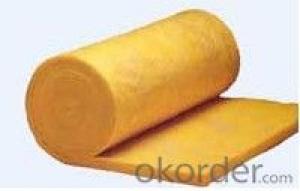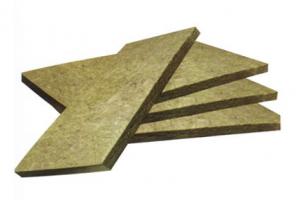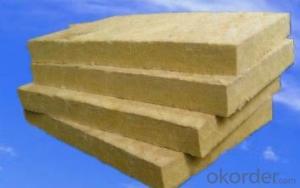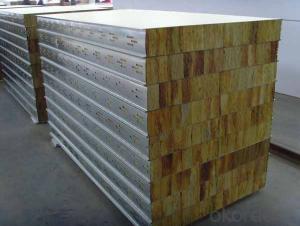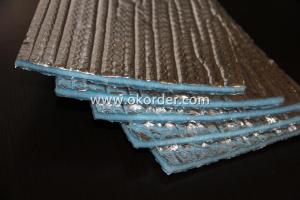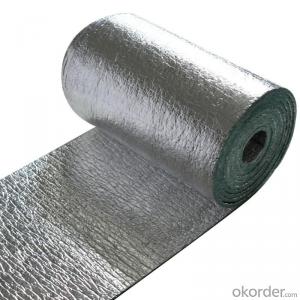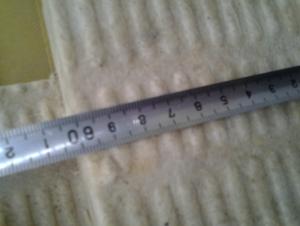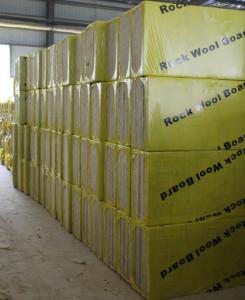Roofing Insulation Rockwool for Building Heat Insulation Material
- Loading Port:
- China Main Port
- Payment Terms:
- TT OR LC
- Min Order Qty:
- -
- Supply Capability:
- -
OKorder Service Pledge
OKorder Financial Service
You Might Also Like
This is a new environmentally friendly aluminum foil bubble heat insulation material, which is soft, light and easy to install. It is made from aluminum foil and polyethylene through special machinery.
Function:
Can be installed on roof, wall or floor, resist over 80% external heat from buildings, protect wall, resist thermal shock and sudden cold, etc.
Characteristics:
1.No odor and toxicity, environmentally- friendly;
2.Moisture barrier, sun-proof, waterproof, good sealing property, heat preservation, energy saving…
3.Heat reflection, heat insulation, sound insulation, anti-radiation, anti-vibration, and shielding;
4.Light, soft, dust free, fire retardant, easy to install;
5.Summer: moisture barrier, sun-proof, heat insulation, saving energy consumed by cool air conditioning ;
6.Winter: heat preservation, central heating saving, and remarkable energy-saving effect.
Product: fireproof material
Technical parameters:
Material structure: AL/bubble/AL | ||
Bubble size: ¢10mm, H 4mm | ||
Bubble weight: 0.13 KG/M2 | ||
Roll size: 1.2M W*40M L (can be customized) | ||
PROPERTIES | Test Data | Unit |
Thickness | 3.5 | MM |
Weight | 256 | G/M2 |
Emissivity | 0.115 | COEF. |
Thermal conductivity | 0.034 | W/M0 |
Apparent Density | 85 | KG/M3 |
Reflectivity | 95-96 | % |
Water Vapour Transmission | 0.013 | G/M2 KPA |
Corrosion | Doesn't generate | |
Tensile strength (MD) | 16.98 | Mpa |
Tensile strength (TD) | 16.5 | Mpa |
Usage:
1. Roof, wall, floor;
2. Shells of air conditioner and water heater;
3. Protective coatings of water pipe and ventilating pip
- Q: As opposed to other roof structures, such as Mansard or Hipped roofs. If so, is it because there is a lesser distance between the internal heat source and the roof?
- Hm. Tough one. Could be. I would think because there is less surface area.
- Q: were can i buy material to insulate pans and instructions to install it? I have seen many roofs with this done ,but , the lowe,s and home depots don't have .
- I think your problem is in the way you are asking the question. I for one do not know what you mean by a metal pan roof. I know all about steel roofs or corrugated roofs and a lot of other roofs but what is a metal pan?
- Q: I live in central florida. I plan on installing R-30 insulation to the floor of my attic. How effective is it to install reflective insulation to the attic on the roof side? Is it worth the price?
- yes okorder
- Q: ... building code max. (R-50)???
- All the answers are OK, BUT nobody has said anything about the over hang of the house. This is not insulated and when the water runs off it comes to the roof edge and then freezes. To get away from this do what I did and move to Florida, If that is not possible get the special heat tapes for roofs and install in a "V" configuration and that will help a hole lot. Hope that this helps you out.
- Q: weather stripping/ foam strip?
- I'm assuming your talking about a ridge cap normally you would seal it in with tar or polyurethane caulk and put your shingles over it
- Q: im thinking of putting rolled felt paper under my metal roofing would that work instead of the reflective insulation instead?
- Be careful what you do under your metal roof. We installed foam spray on insulation under ours and now the inspector is saying it's not "to code" and we lost the buyer for our house because of it. Call a metal roof company - they may give you some free advice.
- Q: Hi, I have got a physics question and was just wondering about it.. Can someone pls tell me how does roof insulation work? how is it effective? How does the insulation changes the heat circulation and transfer inside a house?I know that the insulation prevents radiation from the sun and overheating.. but any more details about radiation, convection and conduction of heat pls?
- Well insulation makes a dead air space (air is stagnant). Since the air is not moving the transfer of hot and cold is slowed down considerably. But since you have to create cross ventilation to reduce rotting in wood and the build up of explosive gasses. Its a crap shoot that it even does any good. Radiation is heat so that's covered by the dead air space. Convection is usually not an issue with the cross venting. Also for conduction the insulation should slow it down considerably.
- Q: I am thinking about getting cavity wall and roof insulation at the moment.But since summer is approaching, I fear that getting the insulation will mean that the house will be very hot at night. (During day time the house will accumulate heat from the sun, and the heat cannot escape).I also fear that the ventilation will be bad and the air in the house will not be as fresh.Any advice please?
- Insulation works to keep a home cooler in summer as well as warmer in winter. And the warm months generally mean better conditions for the installation because of less potential moisture, which sometimes forms in uninsulated homes in the freezing cold, being trapped in ceiling and wall cavities. To have your ceiling insulation function properly, attic ventilation is required. This is approx. 1 sq. ft./ clear ventilation to 300 sq. ft. of attic space. More is better than less. You will find your home cooler. Insulation on its own does not change ventilation. This is an air/vapor barrier situation which also should be considered when insulating.
- Q: What is the difference between roof and loft insulations?
- Potentially that the roof itself is insulated on the underside. A loft insulation could be that the base or floor of the loft/ attic is insulated. Otherwise, I'm not sure.
- Q: I am in the process of having a new roof installed. What are my options in regards to improving its' insulating properties?
- I’m guessing you are asking about the attic. Spray cellulose insulation is the way to go. Very green with 80% or more of the product made from recycled paper. Wet or dry depending on the need, with some system allowing for a DIY application.
Send your message to us
Roofing Insulation Rockwool for Building Heat Insulation Material
- Loading Port:
- China Main Port
- Payment Terms:
- TT OR LC
- Min Order Qty:
- -
- Supply Capability:
- -
OKorder Service Pledge
OKorder Financial Service
Similar products
Hot products
Hot Searches
Related keywords
